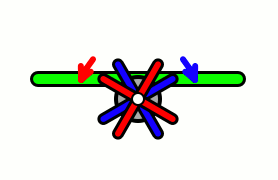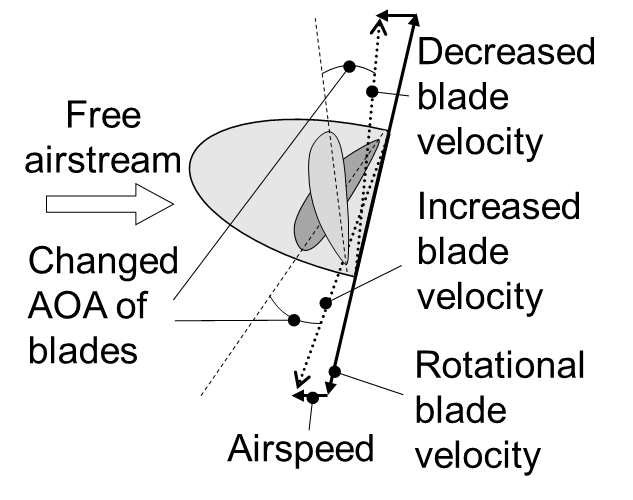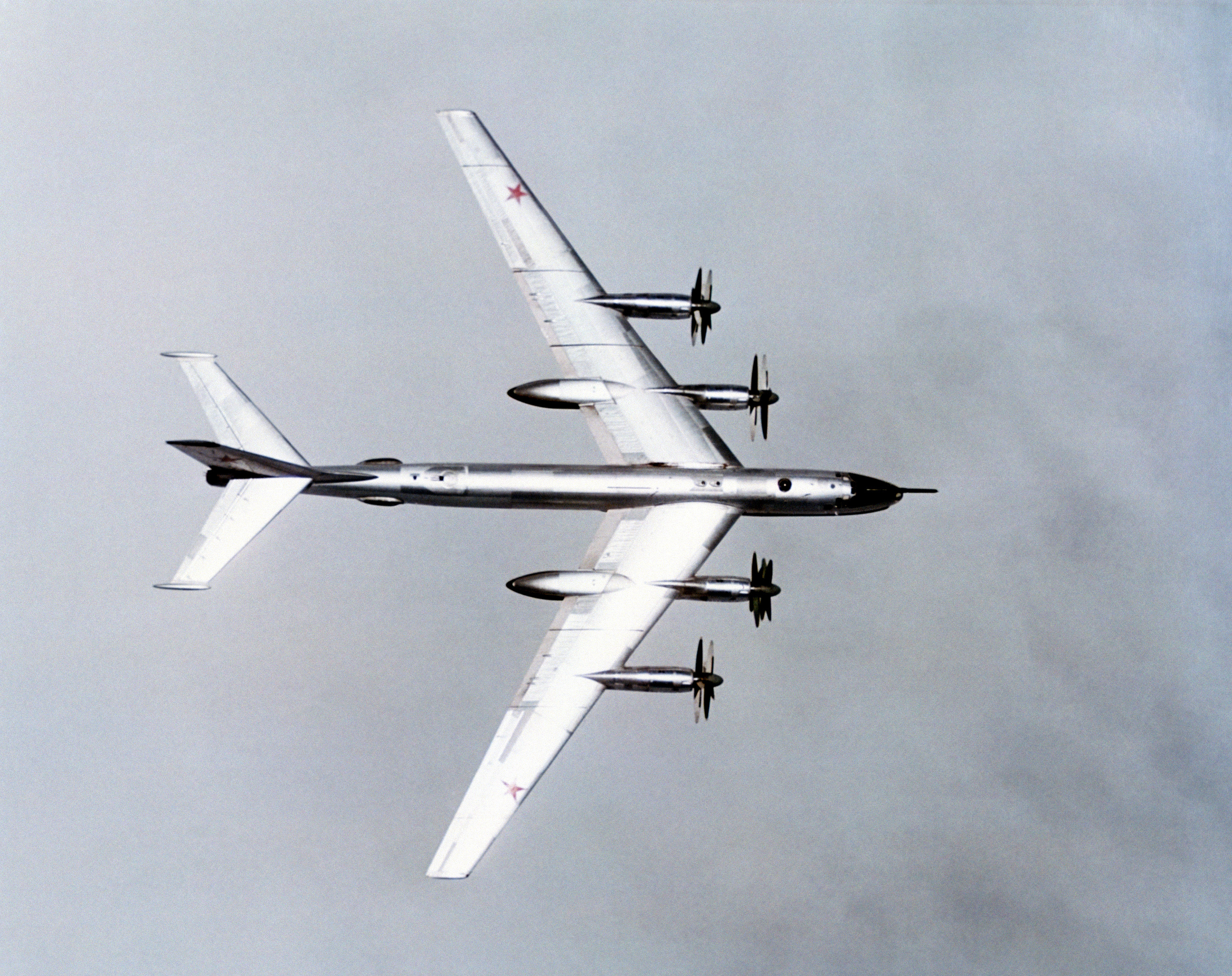|
Contra-rotating Propellers
Aircraft equipped with contra-rotating propellers (CRP) coaxial contra-rotating propellers, or high-speed propellers, apply the maximum power of usually a single engine piston powered or turboprop engine to drive a pair of coaxial propellers in contra-rotation. Two propellers are arranged one behind the other, and power is transferred from the engine via a planetary gear or spur gear transmission. Although contra-rotating propellers are also known as '' counter-rotating propellers'', the term is much more widely used when referring to airscrews on separate non-coaxial shafts turning in opposite directions. Operation When airspeed is low, the mass of the air flowing through the propeller disk (thrust) causes a significant amount of tangential or rotational air flow to be created by the spinning blades. The energy of this tangential air flow is wasted in a single-propeller design, and causes handling problems at low speed as the air strikes the vertical stabilizer, causing the ... [...More Info...] [...Related Items...] OR: [Wikipedia] [Google] [Baidu] |
P-factor
Pfactor, also known as asymmetric blade effect and asymmetric disc effect, is an aerodynamic phenomenon experienced by a moving propeller (aircraft), propeller,) wherein the propeller's center of thrust moves off-center when the aircraft is at a high angle of attack. This shift in the location of the center of thrust will exert a yawing moment on the aircraft, causing it to Aircraft principal axes, yaw slightly to one side. A rudder input is required to counteract the yawing tendency. Causes When a propeller aircraft is flying at cruise speed in level flight, the propeller disc is perpendicular to the relative airflow through the propeller. Each of the propeller blades contacts the air at the same angle and speed, and thus the thrust produced is evenly distributed across the propeller. However, at lower speeds, the aircraft will typically be in a nose-high attitude, with the propeller disc rotated slightly toward the horizontal. This has two effects. Firstly, propeller bla ... [...More Info...] [...Related Items...] OR: [Wikipedia] [Google] [Baidu] |
Westland Wyvern
The Westland Wyvern is a British single-seat carrier-based multi-role strike aircraft built by Westland Aircraft that served in the 1950s, seeing service in the 1956 Suez Crisis. Production Wyverns were powered by a turboprop engine driving large and distinctive contra-rotating propellers, and could carry aerial torpedoes. Design and development The Wyvern began as a Westland project for a naval strike fighter, with the engine located behind the pilot, driving a propeller in the nose via a long shaft that passed under the cockpit floor, similar to the Bell P-39.Williams 1989, Chapter 21. This enabled the pilot to be located in a position that conferred the best possible visibility over the nose for carrier operations. Official interest resulted in Air Ministry Specification N.11/44 for a long-range naval fighter using the 24-cylinder H-block Rolls-Royce Eagle 22 piston engine (unrelated to the First World War-era engine of the same name) being issued to cover Westland's ... [...More Info...] [...Related Items...] OR: [Wikipedia] [Google] [Baidu] |
Armstrong Siddeley Double Mamba
The Armstrong Siddeley Double Mamba is a turboprop engine design developed in the late 1940s of around . It was used mostly on the Fairey Gannet anti-submarine aircraft developed for the Fleet Air Arm of the Royal Navy. Design and development The Double Mamba (rarely known as the Twin Mamba) was a development of the Armstrong Siddeley Mamba with two Mambas driving contra-rotating propellers through a combining gearbox.Gunston 1989, p.20. Engine starting was by cartridge; however, forced air restart was achieved in flight. One engine could be shut down in flight to conserve fuel. Shutting down one engine also stopped one of the propellers. Variants ;ASMD.1: (2 x ASMa.3) used on Fairey Gannet A.S. Mk.1 and Blackburn B-88 ;ASMD.3: (2 x ASMa.5) used on Fairey Gannet A.S. Mk.4 ;ASMD.4: (2 x ASMa.6) used on Fairey Gannet AEW Mk.3 ;ASMD.8: (2 x ASMa.6) used on Fairey Gannet AEW Mk.3 Applications * Blackburn B-88 * Fairey Gannet * Fairey Gannet AEW The Double Mamba engin ... [...More Info...] [...Related Items...] OR: [Wikipedia] [Google] [Baidu] |
Fairey Gannet
The Fairey Gannet is a carrier-borne aircraft that was designed and produced by the British aircraft manufacturer the Fairey Aviation Company. It was developed for the Royal Navy, being the first fixed-wing aircraft to combine both the search and strike portions of anti-submarine warfare (ASW) operations to be operated by the Fleet Air Arm (FAA). The Gannet was originally developed to meet a Second World War era requirement for a dual-role ASW and strike to equip the FAA.Taylor 1974, pp. 356–357. It was a mid-wing monoplane with a tricycle undercarriage and a crew of three, with a double turboprop engine driving two counter-rotating propellers. On 19 September 1949, the prototype Gannet performed its maiden flight. Four years later, it was brought into regular service with the FAA. The service would use the type from the majority of its aircraft carriers throughout the Cold War. Various export customers were also secured for the Gannet, including the Royal Australian Navy, ... [...More Info...] [...Related Items...] OR: [Wikipedia] [Google] [Baidu] |
Rolls-Royce Griffon
The Rolls-Royce Griffon is a British 37-litre (2,240 cubic inch, cu in) Engine displacement, capacity, 60-degree V12 engine, V-12, liquid-cooled Aircraft engine, aero engine designed and built by Rolls-Royce Limited. In keeping with company convention, the Griffon was named after a bird of prey, in this case the griffon vulture. Design work on the Griffon started in 1938 at the request of the Fleet Air Arm, for use in new aircraft designs such as the Fairey Firefly. In 1939 it was also decided that the engine could be adapted for use in the Supermarine Spitfire (Griffon powered variants), Spitfire. Development was stopped temporarily to concentrate efforts on the smaller Rolls-Royce Merlin, Merlin and the 24-cylinder Rolls-Royce Vulture, Vulture; the engine did not go into production until the early 1940s. The Griffon was the last in the line of V-12 aero engines to be produced by Rolls-Royce with production ceasing in 1955. Griffon engines remain in Royal Air Force servic ... [...More Info...] [...Related Items...] OR: [Wikipedia] [Google] [Baidu] |
Avro Shackleton
The Avro Shackleton was a British long-range maritime patrol aircraft (MPA) which was used by the Royal Air Force (RAF) and the South African Air Force (SAAF). It was developed by Avro from their Lincoln bomber, which itself had been a development of the famous wartime Lancaster bomber. The Shackleton was developed during the late 1940s as part of Britain's military response to the rapid expansion of the Soviet Navy, in particular its submarine force. Produced as the primary type equipping RAF Coastal Command, the ''Type 696'' as it was initially designated, incorporated major elements of the Lincoln, as well as the Avro Tudor airliner, and was furnished with an extensive electronics suite in order to perform the anti-submarine warfare (ASW) mission, along with much-improved crew facilities due to the long mission times involved in patrol work. The type was named ''Shackleton'', after the polar explorer Sir Ernest Shackleton. The Shackleton entered operational service with the ... [...More Info...] [...Related Items...] OR: [Wikipedia] [Google] [Baidu] |
Frederick W
Frederick may refer to: People * Frederick (given name), the name Given name Nobility = Anhalt-Harzgerode = * Frederick, Prince of Anhalt-Harzgerode (1613–1670) = Austria = * Frederick I, Duke of Austria (Babenberg), Duke of Austria from 1195 to 1198 * Frederick II, Duke of Austria (1219–1246), last Duke of Austria from the Babenberg dynasty * Frederick the Fair (Frederick I of Austria (Habsburg), 1286–1330), Duke of Austria and King of the Romans = Baden = * Frederick I, Grand Duke of Baden (1826–1907), Grand Duke of Baden * Frederick II, Grand Duke of Baden (1857–1928), Grand Duke of Baden = Bohemia = * Frederick, Duke of Bohemia (died 1189), Duke of Olomouc and Bohemia = Britain = * Frederick, Prince of Wales (1707–1751), eldest son of King George II of Great Britain = Brandenburg/Prussia = * Frederick I, Elector of Brandenburg (1371–1440), also known as Frederick VI, Burgrave of Nuremberg * Frederick II, Elector of Brandenburg (1413–1470), Ma ... [...More Info...] [...Related Items...] OR: [Wikipedia] [Google] [Baidu] |
Supermarine Spitfire XIX Vr
Supermarine was a British aircraft manufacturer. It is most famous for producing the Spitfire fighter plane during World War II. The company built a range of seaplanes and flying boats, winning the Schneider Trophy for seaplanes with three consecutive victories (in 1927, 1929 and 1931). After the war, the company produced a series of jet fighters. Overview Supermarine was founded in 1913 as Pemberton-Billing Ltd. The company was located on the River Itchen close to Woolston, Southampton, on ground purchased by the British aviator and inventor Noel Pemberton Billing to construct motor launches. Pemberton-Billing produced two prototype quadruplanes designed to shoot down Zeppelins—the Supermarine P.B.29 and the Supermarine Nighthawk. Both aircraft were fitted with the recoilless Davis gun. The Nighthawk had a separate powerplant to power a searchlight.The World's Worst Aircraft James Gilbert Pemberton-Billing sold the company to his factory manager and longtime associate Hube ... [...More Info...] [...Related Items...] OR: [Wikipedia] [Google] [Baidu] |
Popular Science Monthly
Popular science (also called pop-science or popsci) is an interpretation of science intended for a general audience. While science journalism focuses on recent scientific developments, popular science is more broad ranging. It may be written by professional science journalists or by scientists themselves. It is presented in many forms, including books, film and television documentaries, magazine articles, and web pages. History Before the modern specialization and professionalization of science, there was often little distinction between "science" and "popular science", and works intended to share scientific knowledge with a general reader existed as far back as Greek and Roman antiquity. Without these popular works, much of the scientific knowledge of the era might have been lost. For example, none of the original works of the Greek astronomer Eudoxus (4th century BC) have survived, but his contributions were largely preserved due to the didactic poem ''Phenomena'' written ... [...More Info...] [...Related Items...] OR: [Wikipedia] [Google] [Baidu] |
Airliner
An airliner is a type of airplane for transporting passengers and air cargo. Such aircraft are most often operated by airlines. The modern and most common variant of the airliner is a long, tube shaped, and jet powered aircraft. The largest of them are wide-body jets which are also called twin-aisle because they generally have two separate aisles running from the front to the back of the passenger cabin. These are usually used for long-haul flights between airline hubs and major cities. A smaller, more common class of airliners is the narrow-body or single-aisle. These are generally used for short to medium-distance flights with fewer passengers than their wide-body counterparts. Regional airliners typically seat fewer than 100 passengers and may be powered by turbofans or turboprops. These airliners are the non- mainline counterparts to the larger aircraft operated by the major carriers, legacy carriers, and flag carriers, and are used to feed traffic into the large a ... [...More Info...] [...Related Items...] OR: [Wikipedia] [Google] [Baidu] |
Tupolev Tu-95
The Tupolev Tu-95 (; NATO reporting name: "Bear") is a large, four-engine turboprop-powered strategic bomber and missile platform. Maiden flight, First flown in 1952, the Tu-95 entered service with the Soviet Long Range Aviation, Long-Range Aviation of the Soviet Air Forces in 1956 and was first used in combat in 2015. It is expected to serve the Russian Aerospace Forces until at least 2040. A development of the bomber for maritime patrol is designated the Tupolev Tu-142, Tu-142, while a airliner, passenger airliner derivative was called the Tupolev Tu-114, Tu-114. The aircraft has four Kuznetsov NK-12 engines with contra-rotating propellers. It is the only turboprop-powered strategic bomber still in operational use today. The Tu-95 is one of the loudest military aircraft, particularly because the tips of the propeller blades move faster than the speed of sound. Its distinctive swept wing, swept-back wings are set at an angle of 35°. The Tu-95 is the only propeller-driven aircr ... [...More Info...] [...Related Items...] OR: [Wikipedia] [Google] [Baidu] |









